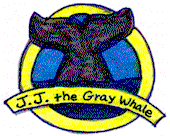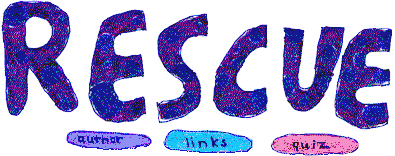Meet Dr. Tom Reidarson
By Amelia
![]() melia has been a friend of Dr. Reidarson
since before he came to SeaWorld. Here, Amelia interviews
Dr. Tom and learns how he got here, how he got to be a
vet, and other great things.
melia has been a friend of Dr. Reidarson
since before he came to SeaWorld. Here, Amelia interviews
Dr. Tom and learns how he got here, how he got to be a
vet, and other great things.
1. How did you get connected with SeaWorld?
In 1988, I became the veterinarian for the Friends of the Sea Lion (FSL), a rehabilitation center for seals and sea lions, in Laguna Beach. I frequently called the veterinarians at SeaWorld to gather advice and before I knew it, Dr. Jim McBain, the senior veterinarian (and my present boss), asked if I wanted to work with SeaWorld. It never hurts to have connections.
2. Why did you want to be a veterinarian?
In third grade, my teacher, Mr. Dale Holmes, got me interested in science through books and I learned about life as seen through a microscope. That only started my interest in science.
3. Was there someone in your life that encouraged you to be a veterinarian?
Not really. My experiences with science-oriented people and my interest in animals shaped my decision to become a veterinarian.
4. How did you choose to doctor sea animals?
As I mentioned, I became interested in sick stranded pinnipeds (seals and sea lions) and offered my services to the FSL center. I felt that I could make a greater difference to the animal world through my efforts to save sick and orphaned animals. Even though I enjoyed pet practice, I needed to expand my scope. In 1991, I decided either to pursue a career with marine animals at an "oceanarium" or aquarium or go back to school and attain the credentials to work with fish. You may not know that aquaculture is an expanding field where veterinarians are now finding jobs. By the time you are my age I predict that the vast majority of fish we consume will come from "farm raised" operations.
5. Do you have any pets at home?
I have a cat. I had to put my dog, Leita, to sleep last year. This dog endured the pokes and prods of my training in veterinary school.
6. Where did you go to college?
I went to UC Irvine for my Bachelors degree in science and then to UC Davis for my DVM (Doctor of Veterinary Medicine).
7. How did you become a veterinarian?
I worked hard through high school and college.
8. What's the grossest thing you've ever done on the job?
I nearly fainted while observing my first minor operation in 1976. I was a kennel boy helping out in the surgery. The surgeon made a small incision, a trickle of blood dripped from the wound, and I had to sit on the ground with my head between my legs. I'm glad to say that this was the first and last time I felt this way. I tend to forget about the gross things in my work. I guess giving an enema to a 20 year old constipated cat ranks very high on the gross chart, though. Also, necropsies (animal autopsies) on decaying animals are also pretty gross.
9. When you first came to SeaWorld, what job did you have?
I was hired as an intern. After one year, the senior vet and general curator hired me as the staff vet. At SeaWorld of California, we have a senior vet, or corporate director of veterinary medicine, a staff vet (me!), and a contract veterinarian (for 2 days a week). There are four SeaWorld parks and each has at least two veterinarians.
10. If you had to pick a different job, what would you pick?
I would be a fish pathologist or a professional golfer.
11. Did you always want to be a veterinarian?
No. I have had many interests over my lifetime. I decided to become a vet during my senior year at UC Irvine. After exploring medicine, ecology, horticulture, teaching, and research, I finally discovered my niche after working for a small-animal vet. And you never know what I'll do in the future. I am presently very happy working as a clinical marine animal vet, but I always keep my options open for other new and exciting areas, such as teaching a vet school or managing an oceanarium or aquarium. Time will tell.
J.J. logo © 1997 SeaWorld, Inc. All rights reserved. Used with permission.


